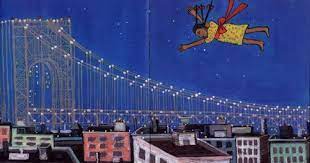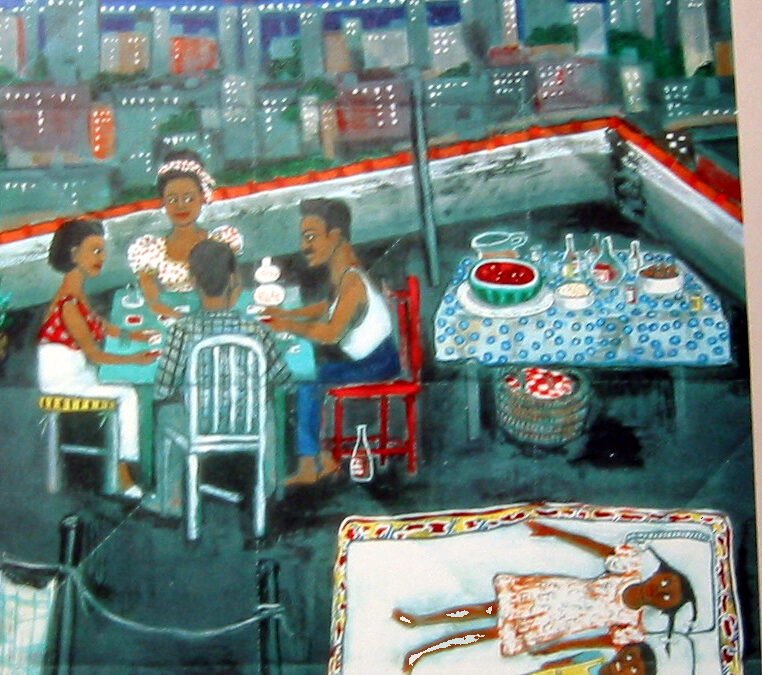Ringgold’s tapestry Tar Beach (1988) and her children’s story Tar Beach (1991) portray a classic urban rooftop picnic.
When Cassie Lightfoot flies over the rooftops of Harlem, the lights of the George Washington Bridge glow against the black sky like pearls. It’s Ringgold’s idea of magic realism. For those unfamiliar with the term, tar beach is what New Yorkers refer to as a place for picnicking, sunbathing, or sleeping on a rooftop—escaping sultry apartments on hot summer nights. If there is a breeze, searching for it takes them to the open night sky.
The family’s rooftop meal includes roasted peanuts, fried chicken, and watermelon. Some critics accused Ringgold of stereotyping because she had watermelon. But Tar Beach won the Coretta Scott King Award for Illustration and a Caldecott Honor Book for 1992.
While the food is set out, Cassie flies, like Peter Pan, above the rooftops leaving the others below. Her flight symbolizes the freedom of youth and the ability to overcome the nagging harshness of racism and the confines of big city living. When she encourages Be Be to join her, he does. Cassie says, “I have told him it’s very easy, anyone can fly. All you need is somewhere to go that you can’t get to any other way. The next thing you know, you’re flying among the stars.” 
Cassie might as well be Peter Pan, but his flights above the rooftops of London never included a picnic on tar beach.
See Faith Ringgold. Tar Beach (Part I from the Woman on a Bridge series) (1988), acrylic on canvas, bordered with printed, painted, quilted, and pieced cloth; Faith Ringgold. Tar Beach (New York: Crown Publishers, 1991).

